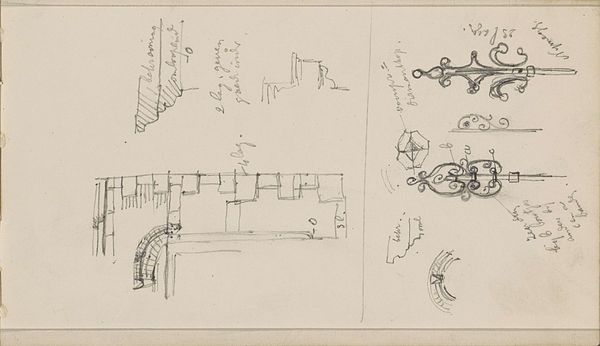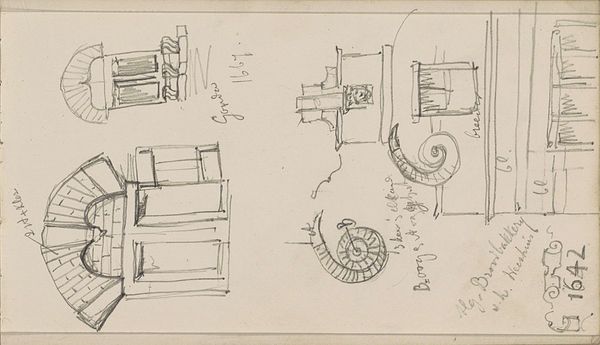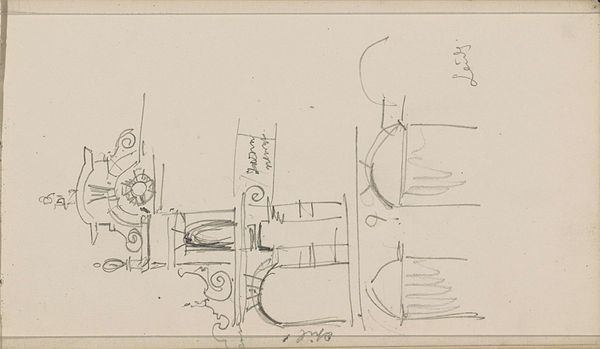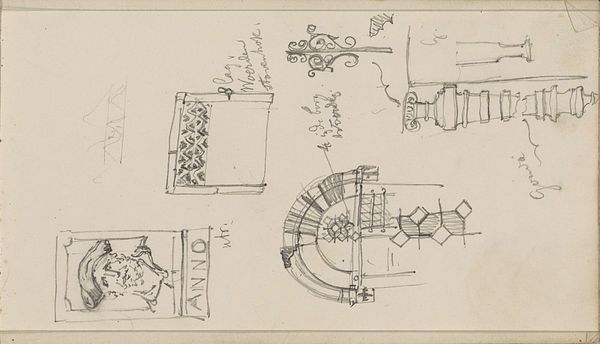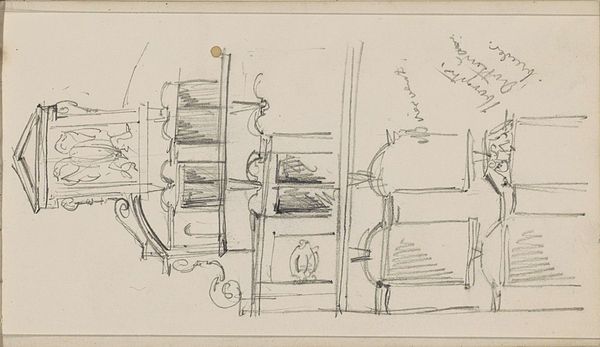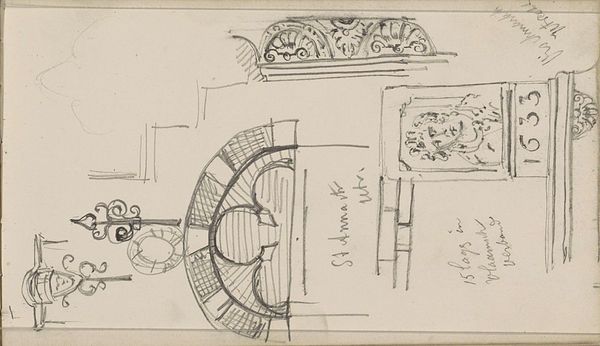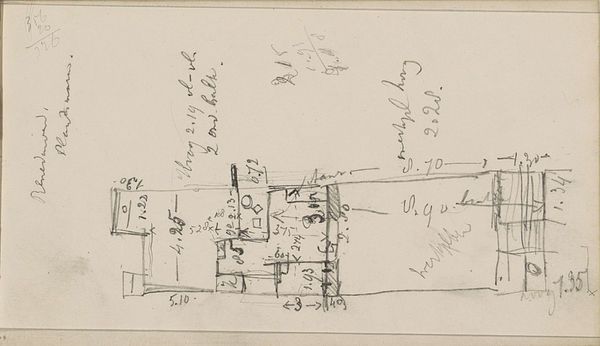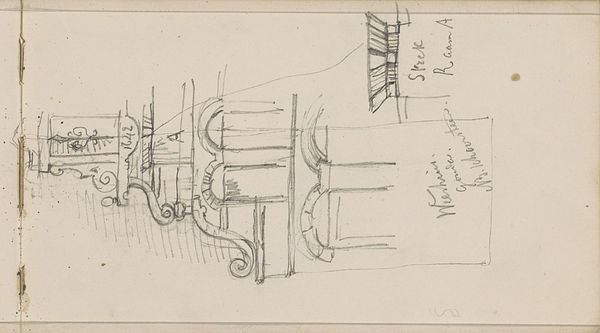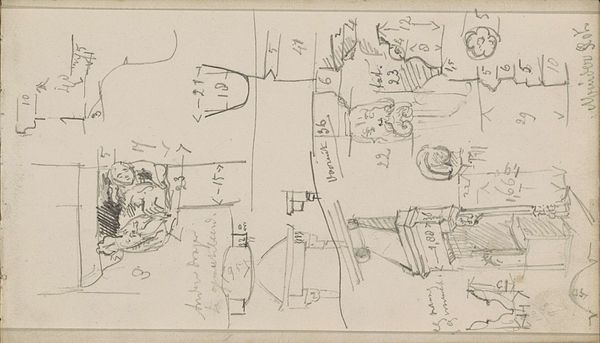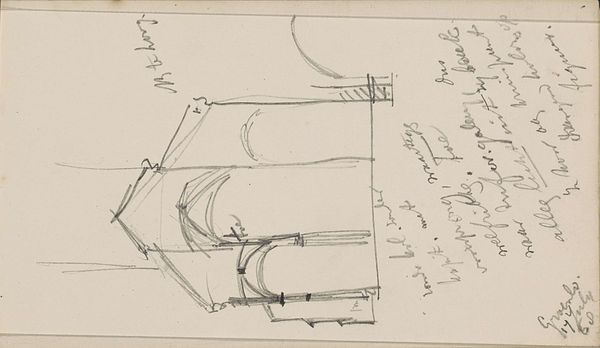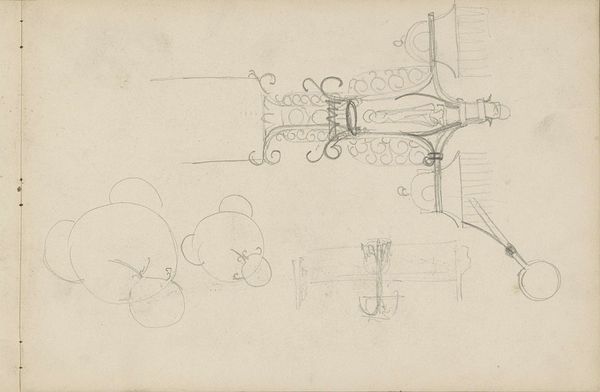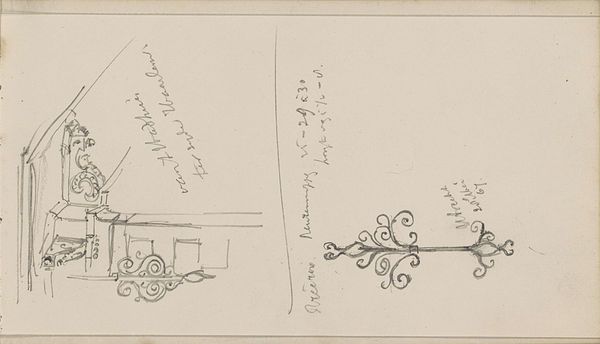
Copyright: Rijks Museum: Open Domain
Curator: Here we have Isaac Gosschalk’s "Architectuurstudies te Groenlo," a drawing from 1868. It's an interesting look at architectural elements from Groenlo, sketched on paper with pencil. Editor: It's immediate charm lies in its rawness. It feels so immediate, like a captured thought from a wandering eye. There's a visible interest in the texture and materiality of these iron architectural fragments but its clear he is still roughing it all out, and noting calculations on measurements around his drawings. Curator: Absolutely. Gosschalk was working in a period increasingly interested in documenting and preserving historical sites. Groenlo, with its rich history and fortifications, would have presented a fascinating subject for study. Drawings such as these highlight the 19th-century preservation movements desire to catalog remnants of cultural past for posterity. Editor: I'm struck by his choice of graphite—or perhaps charcoal?—for the sketch, how that choice emphasizes shadow and the three dimensional volumes as it helps gives this sketches an added weight. It is important when capturing architecture through art to give viewers the reality of volume within form, which is done successfully here. It calls attention to both his material exploration, as well as emphasizing the skill that goes into its production Curator: I agree that it certainly emphasizes the contrast with architectural drawings that were purely technical at the time. It wasn't unusual at the time for draftsmen to purely highlight surface patterns rather than actual volumes, so Gosschalk drawing would make this work all the more distinct and personal when viewed against the landscape of more impersonal documentation and formal practices for records. The texture on the aged paper too, further reminds the viewer of the social history these forms went through to still exist. Editor: The work is about revealing the means of its making. Each element sketched and measured seems to invite further research to the process behind the piece, but also the cultural and human work required to maintain the site it studies.. Curator: I hadn't thought about it that way before. Thanks to you, I will walk away with a new perspective that considers a more conscious choice to invite a curious eye. Editor: My pleasure! Now, off to find some similarly evocative stone-works that also beckons consideration for viewers.
Comments
No comments
Be the first to comment and join the conversation on the ultimate creative platform.
